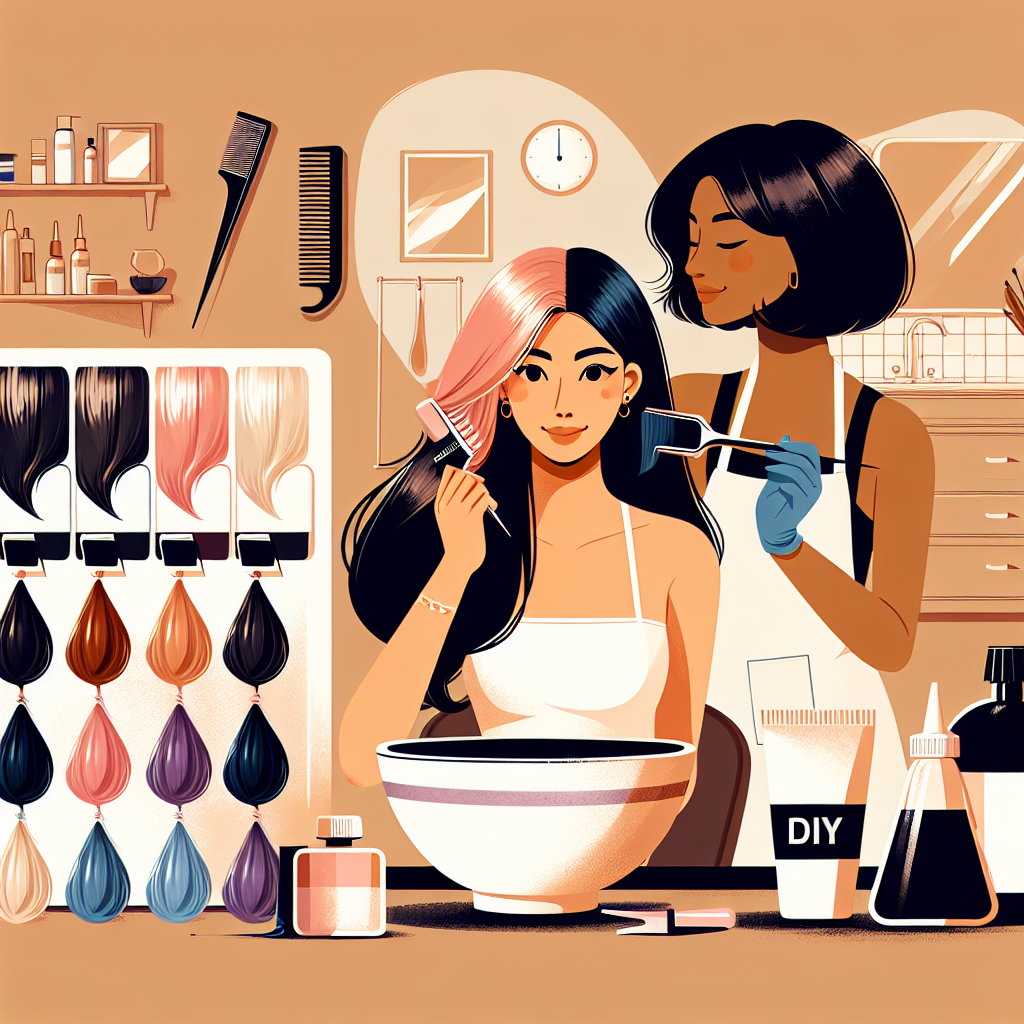Choosing the right hair color can be an exhilarating but daunting task. With an array of options available, it’s no wonder many people find it challenging to pinpoint the perfect shade. However, with a little knowledge and some expert tips, you can successfully customize your hair color at home without visiting a salon. Here’s a comprehensive guide to help you find your ideal hue.
Understand Your Skin Tone
Your skin tone plays a crucial role in determining the hair color that will look best on you. Generally, skin tones are categorized into three main types: cool, warm, and neutral. To find out your skin tone, examine the veins on your wrist:
- Cool tones: Your veins appear blue, and silver jewelry complements your skin better.
- Warm tones: Your veins look greenish, and gold jewelry suits your complexion.
- Neutral tones: Your veins are a mix, and you can wear both silver and gold jewelry.
Once you identify your skin tone, you can choose shades that enhance your natural beauty.
Choose the Right Shade Family
After determining your skin tone, select a shade family that aligns with it:
- Cool skin tones: Look for shades like ash blonde, platinum, cool browns, and true blacks.
- Warm skin tones: Opt for warm blondes, golden browns, and rich auburns.
- Neutral skin tones: You can experiment with a wide range of colors, including both warm and cool shades.
Consider Your Natural Hair Color
Your natural hair color also influences how well a new shade will adapt. If you have dark hair, going much lighter may require more effort and pre-lightening. Conversely, if you have light hair, dark colors will generally apply more easily. Keep this in mind as you select dyes and tones to achieve a harmonious look.
Using the Color Wheel
The color wheel can serve as a valuable tool for customizing your hair color. Opposite colors on the wheel cancel each other out, while adjacent colors enhance one another. For instance, if you want to neutralize brassy tones in blonde hair, a violet toner will work well. Use this principle when mixing colors to create a custom shade that suits your style.
Mixing Colors for Custom Shades
Once you have a basic understanding of color theory, you can customize shades by mixing different dyes. For example:
- Mixing equal parts of a warm caramel and a deep chestnut will create a rich, multidimensional brown.
- Add a drop of vibrant red to your brown dye to achieve a warmer, mahogany tone.
- Combining a light blonde with a cool lavender can create a beautiful pastel shade.
Always conduct a strand test before applying the mix to your entire head to ensure it’s the color you want.
Maintain Your Customized Color
To keep your newly colored hair looking fresh, invest in a good color-safe shampoo and conditioner. Additionally, consider using color depositing masks or conditioners to maintain vibrancy between color applications. Limit heat styling and seek out UV protection for your strands, as sun exposure can fade hair color.
Consult with a Professional If Needed
While DIY hair coloring can be a fun experience, don’t hesitate to consult with a professional stylist if you feel overwhelmed or unsure. Professionals can provide guidance and advice that can save you time and potential mishaps along the way.
Conclusion
Customizing your hair color at home can be an enjoyable journey of self-expression. By understanding your skin tone, selecting the right shades, and using the color wheel effectively, you can discover the perfect hue that complements you beautifully. Remember to be bold, but also cautious, and you’ll achieve the hair color of your dreams!

